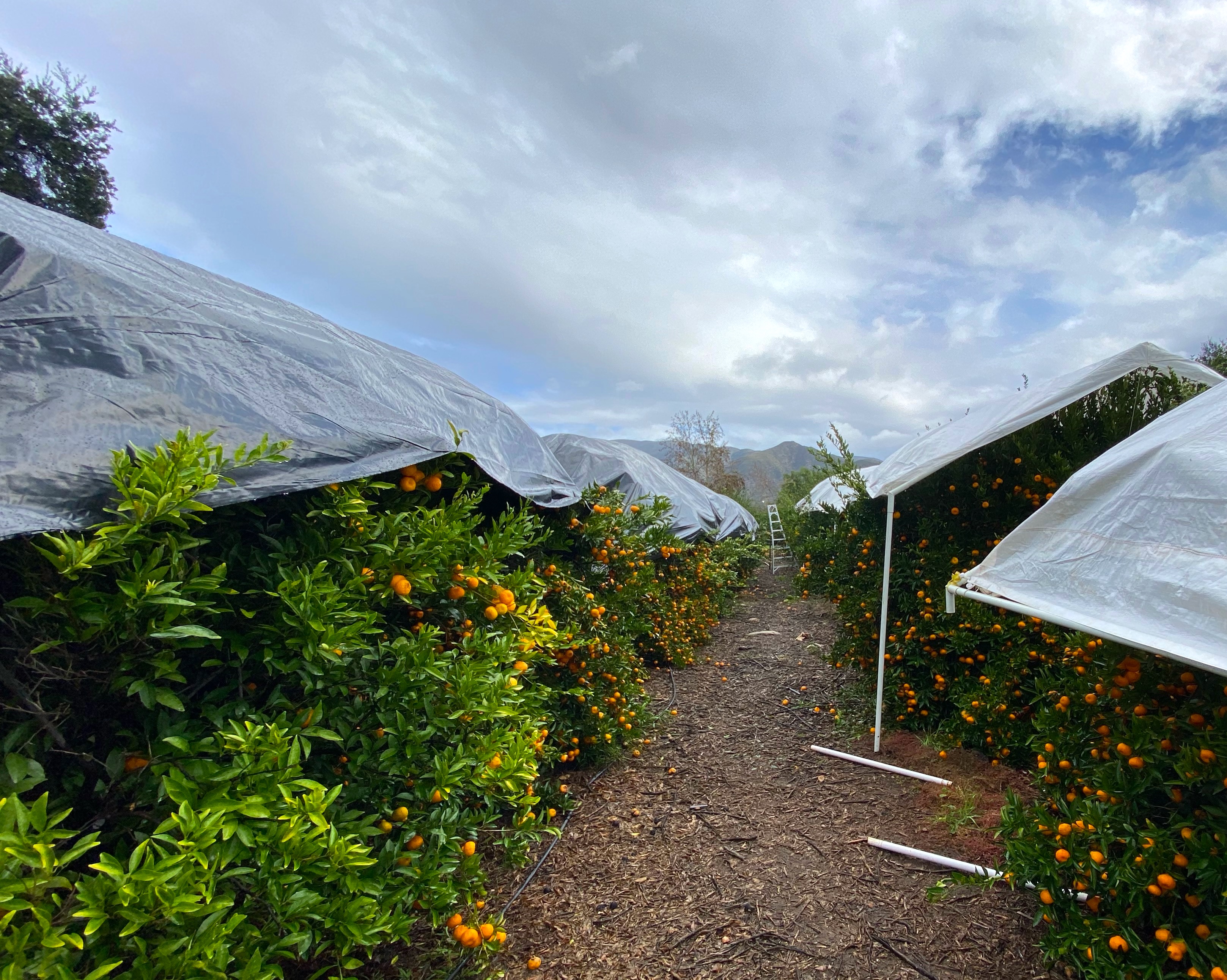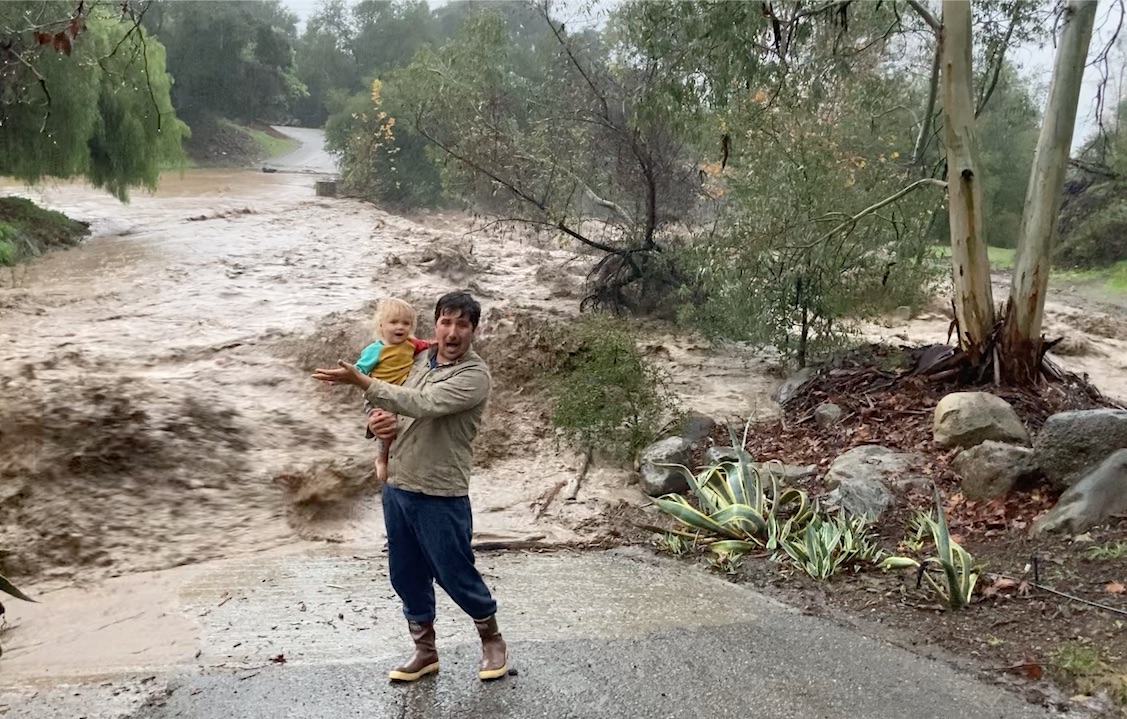Wet Kishu Report - Jan 12
Posted by Jim Churchill on 12th Jan 2023
When creeks rise in southern California, dry beds become turbulent torrents. We put together a little video to show how storm flows look in the East End of Ojai.
Nikos, born in the drought, gets his first glimpse of Ojai's waterways in full flood.
The Ojai Valley is 100% reliant on what falls from the sky. Some
folks have wells, many of us rely on the Bureau of Reclamation dam
that created Lake Casitas. Either way, whether aquifer or the
lake, the sources of pumpable supply have gotten dangerously low
since 2005, having dipped to 29% of capacity at Lake Casitas
immediately before the rains.
At Churchill Orchard, the rain fills us with contradictory
emotions. We need the water, and it is truly thrilling to
experience the rains. Also we have many tons of mulch on the
ground and the orchard is covered with what we call "resident
vegetation" (outsiders call it weeds!), so we gloat (just a
little) about having very little run-off.
On the other hand, the rains are falling in the middle of kishu
season, when we need to harvest the little kishu tangerines and
manage our harvest volume to give ourselves the 5-6 week season
we need to supply mail order, the farmers market, and wholesale.
Climatologists have been saying that average rainfall taken
over a number of years is likely to remain roughly the same in
southern California as it was before climate change - say, about
14" per year in the Ojai Valley - but that the rain will come in
fewer, more intense storms. And here we are: the current set of
storms, while causing grief in many areas of California, including
the Ojai Valley, is performing the incredibly useful service of
filling up the aquifers and the creeks which are the sources of
Ojai's water.
Standard practice is to get
the fruit off before the rains. Standard practice is to harvest
the entire orchard in one go, then pack it and move it out. Our
business model is different - we wait until the fruit is fully
ripe, then we pick over the course of weeks, and pack to order.
You can't send crews out to harvest soaking trees - getting soaked
from picking is awful for the harvest crews. Also, we can't pack
wet fruit.
So we take measures: we cover the trees as best we can, to provide
pickable trees in the intervals between storms.
When we do have wet fruit, which we inevitably do, we store it in
the barn and run fans to dry the fruit out.
Bon appetit! We hope to be able to serve you.

